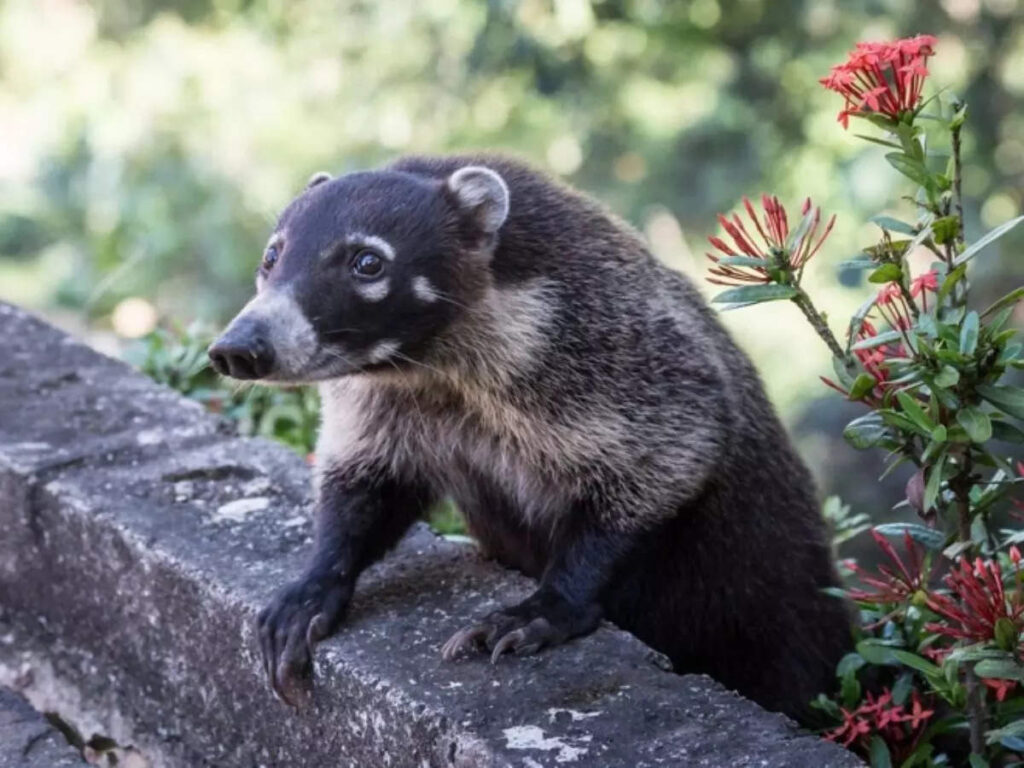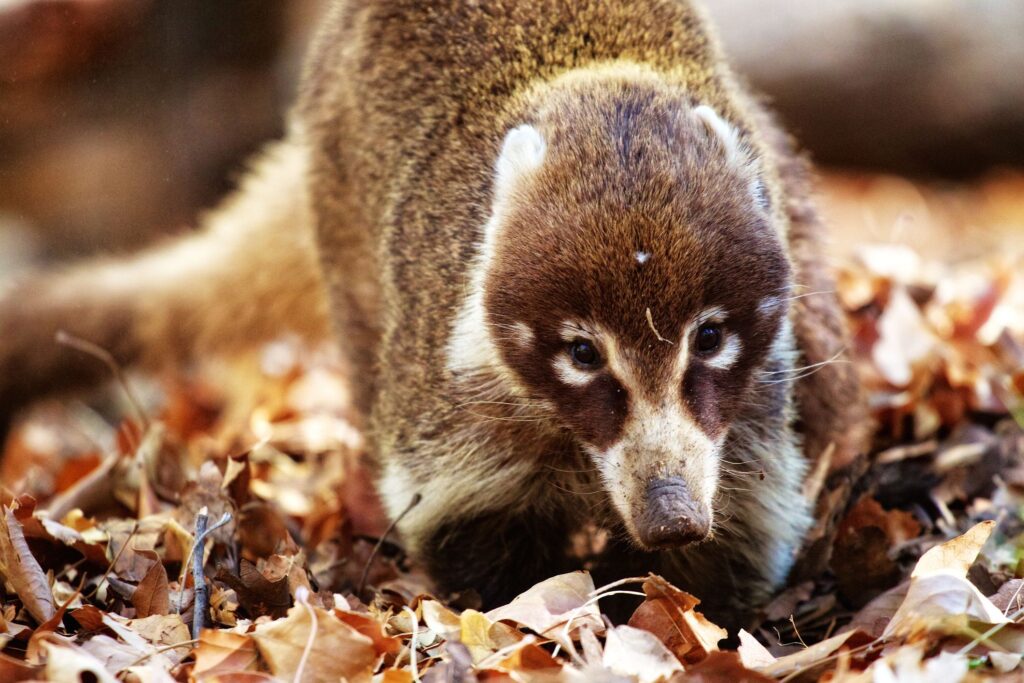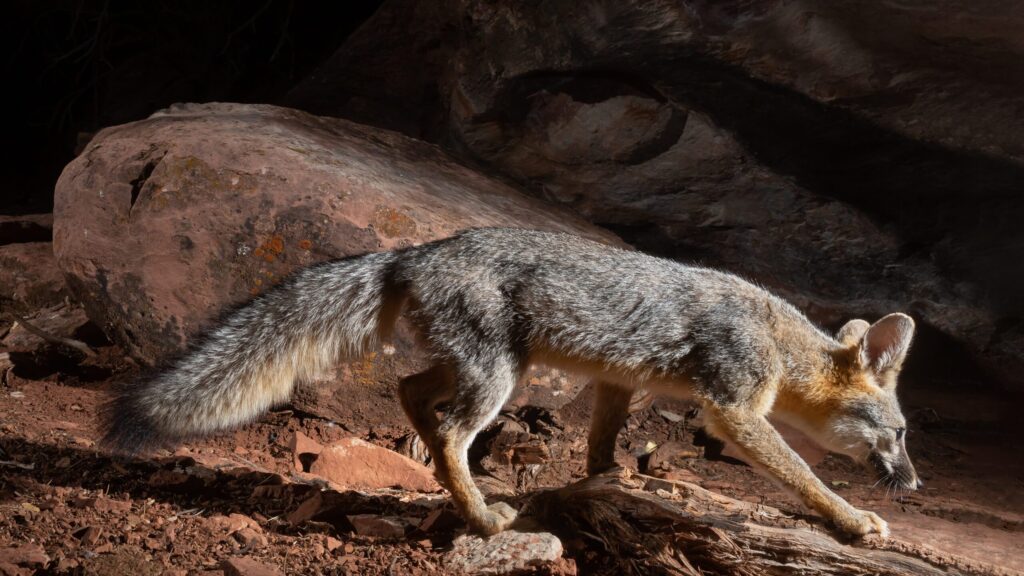
So you think you know all about the animals that inhabit Arizona, huh? Well, think again! Prepare to be amazed as you discover a whole new world of peculiar creatures in the enchanting “Strange Animals In Arizona” guidebook. From elusive cryptids lurking in the shadows to bizarre adaptations that defy logic, this captivating book will take you on a wild journey through the untamed wilderness of Arizona, unraveling the mysteries behind its most peculiar inhabitants. Get ready to have your preconceived notions of Arizona’s wildlife completely shattered as you uncover the secrets of these astonishing and enigmatic creatures.
Exotic Reptiles in Arizona
If you’re fascinated by reptiles, Arizona is the place to be. The state is home to some truly unique and exotic species, ranging from venomous lizards to ancient tortoises. One of the most intriguing reptiles you can find in Arizona is the Gila Monster, hailed as America’s most venomous lizard. With its striking orange and black patterned skin, this elusive creature is a sight to behold. Despite its venomous nature, it rarely poses a threat to humans as it spends most of its time hiding in underground burrows.
Another remarkable reptile native to Arizona is the Desert Tortoise. This ancient creature has been around for millions of years and is considered a symbol of wisdom and longevity. The Desert Tortoise is well-adapted to the harsh desert environment, possessing the ability to store water in its bladder for prolonged periods. Unfortunately, these gentle giants are facing numerous threats to their survival, including habitat destruction and illegal pet trade. Efforts are underway to protect and conserve this unique species so that future generations can continue to marvel at its resilience.
Last but not least, we have the Arizona Coral Snake, a dangerous beauty that captures the attention of both amateur herpetologists and snake enthusiasts alike. With its vibrant red, yellow, and black bands, the Arizona Coral Snake is a striking presence in the desert landscape. Though its venom is extremely potent, making it one of the most venomous snakes in North America, encounters with humans are rare due to its reclusive nature. If you’re lucky enough to spot one from a safe distance, consider yourself privileged to witness such a captivating creature in its natural habitat.
Unusual Bugs and Insects
If you thought Arizona’s reptiles were fascinating, wait until you discover the unusual bugs and insects that call this state home. One such creature that commands attention is the Tarantula Hawk, a fearsome predator with a reputation for its painful sting. Don’t let its name fool you; it’s not a hawk at all but rather a large species of solitary wasp. The Tarantula Hawk’s unique hunting strategy involves paralyzing tarantulas and using them as hosts for its eggs. Witnessing this incredible display of nature’s tenacity can be both captivating and awe-inspiring.
Another insect worth mentioning is the Palo Verde Beetle. This massive local is often seen during the monsoon season, making its grand entrance with an impressive size and intimidating appearance. Although the Palo Verde Beetle may look menacing, fear not, as it is harmless to humans. In fact, these large beetles serve an important ecological role by pollinating plants and contributing to the overall health of the desert ecosystem.
While insects like the Tarantula Hawk and the Palo Verde Beetle might catch your attention, it’s essential not to overlook the Harvester Ants. These venomous insects are known for their powerful stings and aggressive behavior when their nest is disturbed. Found in abundance throughout Arizona, Harvester Ants play a crucial role in seed dispersal and soil aeration. So, though they may have a sting in their tale, it’s important to respect their presence and appreciate the valuable ecological role they fulfill in the desert.
Unique Mammals in the Wild
Moving on to the fascinating world of mammals, Arizona offers an array of unique creatures that roam its scenic landscapes. One such animal is the Coati, a curious and nosy mammal that’s sure to capture your attention. With its unmistakable long snout and ringed tail, the Coati is often seen foraging around the desert floor in search of food. These social animals live in large groups called bands or coatis, hence their name. If you’re lucky enough to spot a band of Coatis during your Arizona adventure, make sure to observe them from a safe distance and appreciate their natural behaviors.
Another mammal that holds a special place in the hearts of Arizonans is the Ringtail Cat, which also happens to be the state mammal. Known for its striking appearance and agile climbing abilities, the Ringtail Cat is often mistaken for its cousin, the Raccoon. However, its elongated tail is a dead giveaway. These adorable creatures primarily reside in rocky areas and canyons, where they make their dens in rock crevices or abandoned burrows. If you’re fortunate enough to catch a glimpse of a Ringtail Cat during your time in Arizona, consider it a true wildlife encounter.
Finally, we have the Javelina, fondly referred to as the Skunk Pig due to its peculiar odor. These desert-dwelling mammals are actually not pigs at all but are considered a type of peccary. Javelinas are known for their strong social connections and often travel in tight-knit family groups. With their bristly hair and distinctive tusks, these desert-dwelling creatures are a unique sight to behold. Keep in mind, however, that Javelinas can be easily startled, so it’s crucial to admire them from a safe distance and respect their boundaries.
Striking Aquatic Creatures
When you think of Arizona, water-dwelling creatures may not be the first thing that comes to mind. However, the state is actually home to some remarkable aquatic species that have adapted to survive in its desert environment. One such surprise is the Arizona Trout, a native fish that thrives in the state’s cold, clear waters. Its vibrant colors and feisty behavior make it a prized catch for anglers and a delightful sight for nature enthusiasts. This desert surprise serves as a reminder that beauty and diversity can be found even in unexpected places.
Another unusual fish found in Arizona is the Virgin River Spinedace. Living in the Virgin River Basin, this unique fish has evolved to survive in highly variable, fast-flowing waters. Its streamlined body and powerful swim bladder allow the Virgin River Spinedace to navigate the swift currents with ease. Despite its ability to adapt to such extreme conditions, this fascinating fish faces increasing threats from habitat degradation and the introduction of non-native species. Conservation efforts are underway to safeguard its future and ensure that it continues to thrive in its native Arizona waters.
Last but certainly not least in the aquatic realm, we have the Lowland Leopard Frog. This amphibious resident can be found in wetland areas throughout the state, where it plays a vital role in maintaining a healthy ecosystem. With its vibrant markings and distinct call, the Lowland Leopard Frog adds a touch of beauty and charm to Arizona’s aquatic landscapes. Unfortunately, the populations of this striking frog have been in decline due to habitat loss and the introduction of non-native species. Conservation projects are in place to protect and restore its habitat, allowing this amphibious resident to continue enchanting us with its presence.

Extraordinary Birds of Arizona
Arizona is a birdwatcher’s paradise, boasting a wide variety of avian species that are sure to leave you in awe. Among the extraordinary birds found in this desert state, one stands out as a symbol of elegance: the Snowy Egret. With its brilliant white plumage and sleek, slender build, this magnificent bird can often be spotted gracefully wading through shallow waters in search of its next meal. The Snowy Egret’s captivating presence serves as a reminder of the delicate balance of nature and the importance of protecting the habitats that these beautiful creatures call home.
Another bird unique to Arizona is the Cactus Wren, which holds the esteemed title of the state bird. Known for its distinctive call and bold, spiky appearance, the Cactus Wren is perfectly adapted to its barren desert surroundings. Often seen perched atop saguaro cacti, these resilient birds build intricate nests within the protective arms of these towering desert giants. Witnessing the Cactus Wren go about its daily activities is a remarkable experience and a testament to the wonders of Arizona’s birdlife.
The Gambel Quail is yet another remarkable bird that calls Arizona home. With its distinguished plumage and quirky topknot, this unique desert dweller stands out among its avian counterparts. Gambel Quails are highly social birds and can often be seen traveling in large groups called coveys. Wandering through Arizona’s arid landscapes, these fascinating birds bring a touch of life and vibrancy to the desert. Keep your eyes peeled, as catching a glimpse of a Gambel Quail can be a memorable moment during your Arizona adventures.
Astounding Night Creatures
When the sun dips below the horizon, a whole new cast of creatures emerges to take center stage in Arizona’s nocturnal world. One such creature is the Western Screech Owl, a tiny yet terrifying predator of the night. With its penetrating yellow eyes and haunting call, this little owl possesses an eerie charm. Resting in the cavities of trees during the day, the Western Screech Owl emerges under the cover of darkness to hunt for small mammals and insects. Spotting one of these elusive creatures is a testament to your observational skills and an exciting addition to your list of Arizona wildlife sightings.
Another notable nocturnal creature in Arizona is the Pallid Bat. A unique feature of this bat is its preference for ground-dwelling prey, such as insects and scorpions. Using its keen sense of smell and exceptional hearing, the Pallid Bat hunts its meals with remarkable accuracy. These marvelous creatures are known for their pale fur and distinctive facial features. Although they may seem mysterious and somewhat fearsome, Pallid Bats are an essential part of the ecosystem, contributing to pest control and the overall health of Arizona’s desert habitat.
Last but certainly not least, we have the Mountain Lion, a stealthy predator that rules the night in Arizona’s wild spaces. While encounters with these majestic creatures are rare, evidence of their presence can be found in the form of tracks and scratches on trees. Mountain Lions are skilled hunters and can take down large prey with ease. They play a crucial role in maintaining a balanced ecosystem and are a testament to the untamed wildness that still exists in Arizona’s remote corners. Whether you hear their powerful roar echoing through the night or catch a glimpse of their elusive silhouette, encountering a Mountain Lion is a truly exhilarating experience.

Noteworthy Rodents in Arizona
Rodents may not be everyone’s idea of charismatic creatures, but Arizona offers some noteworthy members of this often-overlooked group. One such rodent is the Arizona Gray Squirrel, a forested creature typically found in higher elevations. With their fluffy gray fur and bushy tails, these squirrels are a delightful sight as they scamper through the tall pines and spruces of Arizona’s upland forests. They are expert climbers and acrobats, displaying impressive dexterity as they navigate their arboreal landscapes. The presence of the Arizona Gray Squirrel adds a touch of charm to the state’s diverse ecosystems.
Another fascinating rodent that calls Arizona home is the Kangaroo Rat. True to its name, the Kangaroo Rat is known for its incredible jumping ability, using its powerful hind legs to propel itself great distances. These desert-dwelling rodents have adapted to the arid environment by being able to survive without drinking water for extended periods. Instead, they obtain the necessary moisture from the seeds they consume. So, if you happen upon a Kangaroo Rat during your desert explorations, take a moment to appreciate its remarkable adaptations that allow it to thrive in seemingly inhospitable conditions.
The Round-Tailed Ground Squirrel is yet another noteworthy rodent that burrows its way into the hearts of Arizona’s wildlife enthusiasts. These small and charming creatures can be found scurrying across the desert floor, their tails held high in the air. Round-Tailed Ground Squirrels are burrowers, constructing intricate tunnel systems that provide protection from predators and the harsh desert climate. Though often overshadowed by their larger mammalian counterparts, these tenacious rodents play an important role in the desert ecosystem and deserve recognition for their persistence and adaptability.
Prehistoric-Looking Arizona Animals
Arizona is not only home to a diverse array of current wildlife but also houses some remarkable creatures that seem to have stepped out of prehistoric times. One such animal is the Horned Lizard, a living fossil that has remained virtually unchanged for millions of years. Known for its unique defense mechanism of shooting blood from its eyes, the Horned Lizard is both fascinating and formidable. With its spiky appearance and distinctive “horns,” this legendary creature is a true testament to the ancient heritage of Arizona’s wildlife.
Another prehistoric-looking animal that roams Arizona’s arid landscapes is the Sonoran Pronghorn Antelope. This extraordinary land mammal holds the title of North America’s fastest land mammal, capable of reaching speeds of up to 60 miles per hour. With its large, forward-curving horns and slender build, the Sonoran Pronghorn Antelope cuts a striking figure as it gracefully navigates its desert home. Unfortunately, this majestic creature is listed as an endangered species, facing numerous threats to its survival. Conservation efforts are underway to protect and restore its habitat, ensuring that the Sonoran Pronghorn Antelope continues to astonish us with its prehistoric allure.
Finally, we have the Apache Trout, a historical survivor that has managed to cling to existence despite numerous challenges. This fish, native to Arizona’s cold, clear mountain streams, has faced habitat degradation and hybridization with non-native species. Thanks to a dedicated conservation program, the Apache Trout has made a remarkable recovery, allowing anglers and nature enthusiasts to witness this living relic of Arizona’s natural history. The resilience of the Apache Trout serves as a reminder of the importance of preserving our natural treasures and the incredible resilience of the creatures that call them home.

Endangered Species in Arizona
Sadly, not all of Arizona’s remarkable wildlife is thriving. The state is home to several endangered species that face various threats to their survival. One such creature is the Mexican Gray Wolf, a struggling predator trying to make a comeback in Arizona’s wilderness. Once on the brink of extinction, the Mexican Gray Wolf has faced significant challenges due to habitat loss, illegal hunting, and human-wildlife conflict. Conservation efforts are crucial to protect this iconic species and ensure its long-term survival in Arizona’s wild landscapes.
Another dwindling species in Arizona is the Sonoran Tiger Salamander, a remarkable amphibian with a unique life cycle. These salamanders start their lives in ephemeral desert pools, where they hatch and develop into adults before making their way to the surrounding upland habitats. Unfortunately, habitat destruction and alteration have severely diminished the population of the Sonoran Tiger Salamander. Conservation initiatives focused on preserving and restoring their fragile aquatic habitats are essential to reversing the decline of this extraordinary species.
Last but certainly not least, we have the Mount Graham Red Squirrel, a forest guardian that plays a critical role in the delicate balance of the mountain ecosystems it inhabits. These adorable squirrels have been significantly impacted by habitat loss and disturbance caused by human activities. Found exclusively in the high-altitude forests of Mount Graham in southeastern Arizona, the Mount Graham Red Squirrel is a unique and treasured species that deserves our attention and conservation efforts to preserve its fragile habitat.
Invasive Species Impacting Arizona
While Arizona’s native wildlife is awe-inspiring, the state also faces challenges from invasive species that have a negative impact on its fragile ecosystems. One such invader is the Burmese Python, a constrictor that has made its way into the state’s waterways and wreaked havoc on native wildlife. Originally from Southeast Asia, these large and powerful snakes pose a significant threat to Arizona’s delicate ecosystem, preying on native species and outcompeting them for resources. Efforts are underway to control and eradicate Burmese Pythons and prevent their further spread in the state.
Another invasive species causing trouble in Arizona is the Quagga Mussel. Originally native to Eastern Europe, these small but destructive mussels have infested water bodies throughout the state, including the Colorado River. Quagga Mussels multiply rapidly and can clog pipes, damage infrastructure, and disrupt the ecological balance of aquatic ecosystems. Combating the spread of Quagga Mussels is an ongoing challenge and requires collaboration between government agencies and the public to curb their impact on Arizona’s water resources.
Lastly, we have the Tamarisk Leaf Beetle, a tiny but formidable threat to Arizona’s native vegetation. This beetle, originally from Asia, feeds on the foliage of tamarisk trees, an invasive plant species that has taken hold in the state’s riparian areas. While the presence of the Tamarisk Leaf Beetle may seem beneficial in reducing the spread of tamarisk trees, it can also negatively impact native plant species that rely on these riparian habitats. Balancing the control of tamarisk infestations while preserving the function and integrity of native ecosystems is an ongoing challenge that requires careful management strategies.
In conclusion, Arizona is a haven for unique and extraordinary wildlife. From venomous lizards to prehistoric-looking creatures, the state offers a diverse array of fauna that captivates both visitors and residents alike. However, it is important to remember that many of these species face various threats to their survival. Conservation efforts, public awareness, and responsible wildlife observation are pivotal in ensuring the long-term preservation of Arizona’s remarkable wildlife. So, the next time you find yourself exploring the desert or soaking in the beauty of Arizona’s landscapes, take a moment to appreciate the strange and awe-inspiring animals that call this state home.






